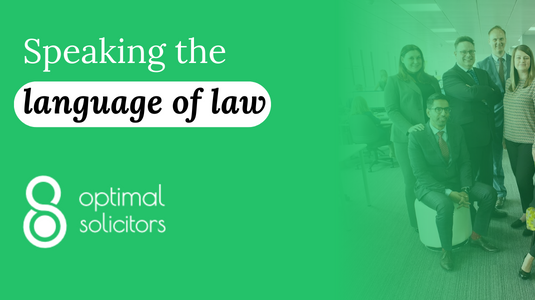In July 2020, Chancellor Rishi Sunak announced a ‘stamp duty holiday’ to help both first time and seasoned homebuyers during the coronavirus crisis. The temporary change in fees is hoped to “kickstart the property market” as we navigate our way through the pandemic.
Stamp Duty, officially known as Stamp Duty Land Tax (SDLT) is a tax payable by those buying property or land in England and Northern Ireland. In Scotland, it is known as Land and Buildings Transaction Tax, while in Wales, any property sales completed on or after 1 April 2018 may incur Land Transaction Tax.
The tax is applicable to home and land buyers who meet one of the following criteria:
- Those buying a freehold property
- Those buying a new or existing leasehold
- Those buying property through a shared ownership scheme
- Those who are given land or property in exchange for payment, e.g. buying a share in a house.
The proposed stamp duty holiday changes will only affect land and property sales in England and Northern Ireland.
What is the stamp duty holiday?
Stamp duty is subject to a threshold – that is, buyers will only have to pay this tax if the land or property is over a certain value. Prior to the pandemic, the threshold for purchasing residential properties was £125,000. For first-time buyers, the threshold was higher: £300,000.
Houses valued at over £500,000
There’s still good news for those buying more expensive properties. The stamp duty will only apply to the value above that amount. For example, if a house is selling for £600,000, only £100,000 will be taxed.
First-time buyers
If you’re a first-time buyer, you’ll also get a discount if you buy after 1 April 2021. To qualify, you and any other buyers need to be first-time buyers, and the house must be valued at £500,000 or less.
How much stamp duty will I have to pay?
Current calculations suggest that nine out of 10 people buying a home before 31 March 2021 will pay no stamp duty at all. In addition, the average stamp duty bill is expected to fall by £4,500. Those buying houses over £500,000 could save up to £15,000.
How stamp duty is calculated
Your total stamp duty bill is calculated in percentage increments based on the value of the property. Things get a little more complicated once the house price reaches £925,000 or more. The stamp duty is then calculated in ‘sections’, for example, anything from £500,000 to £925,000 is subject to 5% tax. If it’s worth £925,000 to £1.5 million, then this next ‘section’ is calculated at 10%. Stamp duty tax rates are outlined below:
| Property value | Stamp duty rate up to 31 March 2021 |
| Up to £500,000 | 0% |
| The next section – £500,001 to £925,000 | 5% |
| The next section – £925,001 to £1.5 million | 10% |
| The next section – anything above £1.5 million | 12% |
So for example, if a house costs £930,000, then £925,000 would be taxed at 5% (£46,250) plus an additional 10% of the remaining £5,000 (£500), making the total stamp duty £46,750.
For simple maths, here are some example stamp duty rates between now and 31 March 2021:
- £500,000 = £0
- £800,000 = £15,000
- £1,000,000 = £28,750
- £1,400,000 = £68,750
Who will benefit from the stamp duty holiday?
Almost everybody buying a home will benefit from the proposed stamp duty holiday changes. With economists predicting nine out of 10 homebuyers making a saving, it’s great news for those buying homes up to £500,000.
At present, the average house price in the UK is valued at £231,285, according to government data. This fluctuates hugely depending on the region, but as the table below suggests, even the average house prices in London are less than the £500,000 threshold.
Average house prices in England – January 2020
| East Midlands | £195,707 |
| East of England | £286,999 |
| London | £476,588 |
| North East | £126,592 |
| North West | £164,769 |
| South East | £320,700 |
| South West | £254,320 |
| West Midlands | £200,628 |
| Yorkshire and the Humber | £165,383 |
What will the stamp duty holiday mean for house prices?
Owing to market uncertainty over the pandemic, UK house prices fell for the first time in eight years back in July. This may result in faster transactions for homebuyers, who may be keen to sign a deal before sellers put up their prices.
Experts at Rightmove are warning that sellers may take advantage of these immediate tax savings, and hike up their prices as a result. Buyers should act now to make the most of the stamp duty holiday.
Does the stamp duty holiday apply to second homes?
The stamp duty holiday does apply to buyers of second homes. However, those buying second homes will be subject to a 3% surcharge on the first £500,000 of the property. As above, the tax goes up incrementally:
| Property value | Stamp duty rate up to 31 March 2021 |
| Up to £500,000 | 3% |
| The next section – £500,001 to £925,000 | 8% |
| The next section – £925,001 to £1.5 million | 13% |
| The next section – anything above £1.5 million | 15% |
If your second home is to replace your main residence, you won’t have to pay a 3% surcharge. However, you’ll need to prove that this is your main residence, by selling or gifting the second property. You’ll only qualify for this exemption if you own the entire first property (e.g. not your parents).



